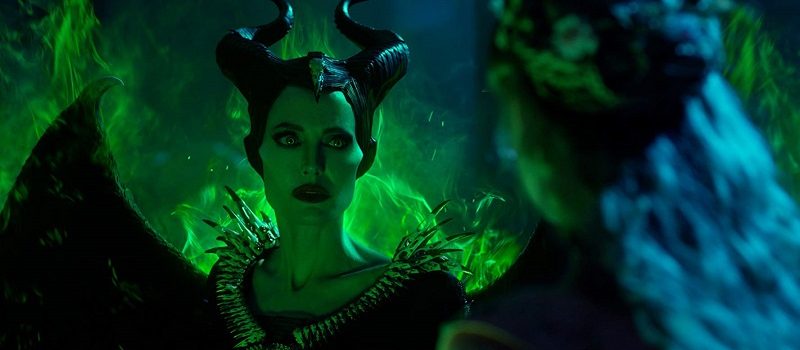Five years ago, Disney did something extraordinary that speaks volumes to the immense creative power they’re extolling of late. It was 2014 and Angelina Jolie and her cinematic alter ego, Maleficent, were on their way into theaters in a live action storytelling of the iconic Mouse House villain.
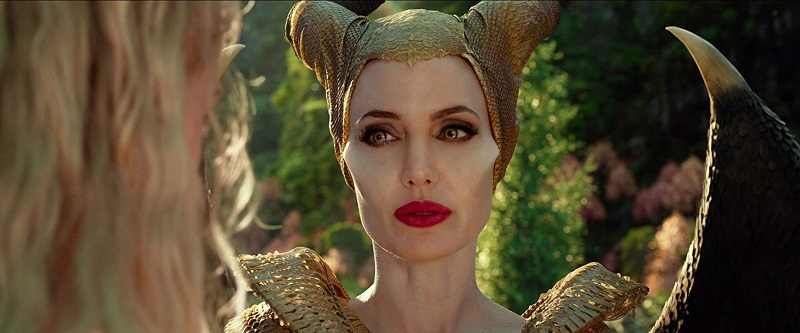
Jolie’s latest addition to her character resume is one that frequently lands on many film journalists’ lists of the evilest villains in Hollywood history. What is so extraordinary is Disney built a live action movie around a villainous soul whose mere image strikes fear in the hearts of millions of grown-ups who as children were traumatized by her in Sleeping Beauty.
…and it was a blockbuster, banking almost $760 million globally.
Linda Woolverton’s script (based on Charles Perrault’s book, La Belle au bois dormant) had humanized the evil doer by delving deep into the psychology of Maleficent, tapping those innate maternal streaks. Instead of cursing the young royal in that legendary way (watch out for that pin prick!), by the close of the Maleficent, Jolie’s character had essentially adopted the “not-so-sleepy anymore” beauty, Aurora (Elle Fanning). The Robert Stromberg directed film popped off the screen with a color palette that was truly majestic. It possessed action sequences featuring the titular character flexing her wings and a varied human and creature ensemble richly anchored in storytelling lore that goes back centuries.
Much of the credit for the film’s success certainly lay at the titanic talent of Jolie and Fanning, and most importantly—their “mother-daughter” chemistry that actually warmed the heart. Yes, we’re talking about one of the more awful cinematic individuals (live action or animated) in history.
Given the box office of the first film, there was no way that Disney was going to let that world lie. A sequel was announced and thankfully, years were invested into going through a myriad of storytelling options that would work for the characters, stay true to the tone of the first film and perhaps, raise the ante a bit as any sequel is expected to do at the least.
In Maleficent: Mistress of Evil, there is reason to be joyous. There has been peace between the two kingdoms of the Moors—a magical forest realm—and Ulstead. The former is being ruled by Queen Aurora as anointed by its previous “ruler,” the title character. The latter, where Prince Phillip (Harris Dickinson) hails, is currently governed by his father, King John (Robert Lindsay). As is done in sequels, we get to meet a new character who was nowhere on the horizon in the first film, King John’s wife, Queen Ingrith (Michelle Pfeiffer).
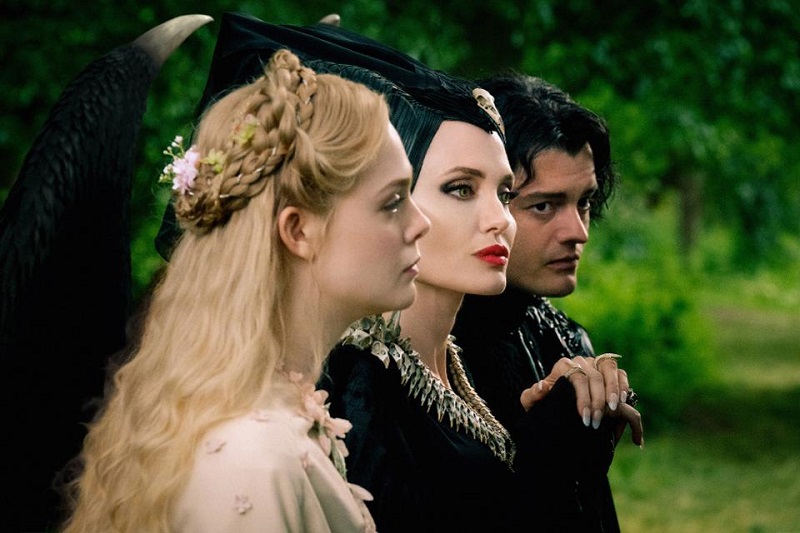
Soon after our story starts, Prince Phillip proposes to Queen Aurora. She says yes and ladies and gentlemen, we’re going to have ourselves a royal wedding! Problem is, Maleficent is not so sure about this union and what it means to her. She’s toned down her evil ways to raise this girl in the most brilliant of manners, yet she is a bit quick to hit the anger buttons when things don’t jive with how she believe they should be. This is one of those times. But she pulls it together and even agrees to meet the parents over dinner on this fine evening. Aurora, Maleficent and her right-hand crow/human Diaval (Sam Riley, back for more!).
Screenwriters Micah Fitzerman-Blue, Noah Harpster and Woolverton have crafted a classic scene here and in hindsight, it is everything for the entire film. After all, there must be conflict. As the dinner begins, small talk ensues. Then, Pfeiffer’s Queen Ingrith starts asking questions of Aurora and Maleficent that grow as a hybrid of invasiveness and provocation. That iconic green hue that represents the Sleeping Beauty villains’ power coming to life starts permeating all corners of this dining hall, effectively ending the dinner before a bite of the chicken is eaten. Heck, Jolie has a field day with her character’s lines when the winged woman sitting at the table is served cooked bird! Everything Queen Ingrith does is subtle, veiled, but all piercingly directed at a woman she detests.
Maleficent: Mistress of Evil is such a thrilling opportunity to witness an Oscar winner (Jolie) and a three-time nominee (Pfeiffer) go at it in a “I love Aurora more than you” battle that literally could be to the death. Caught in the middle Aurora, whose disgust of both exponentially explodes over the course of the film.
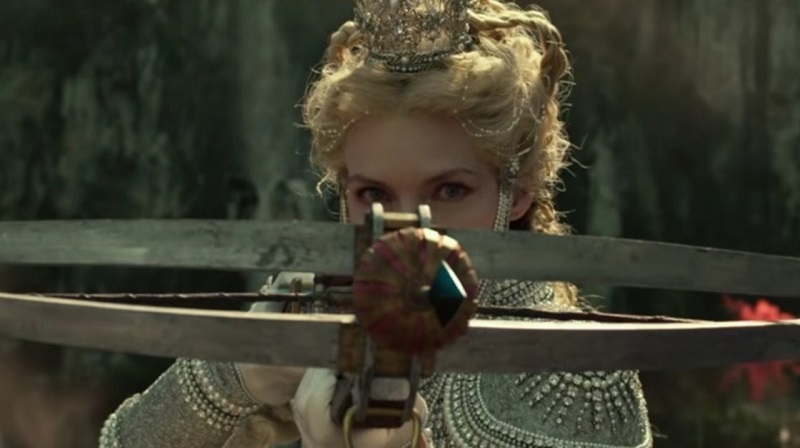
Pfeiffer has a blast and it’s devilishly delightful to see her play such a character. Jolie, meanwhile, has even more to chew on with her character’s update in the sequel. There was a decision made by the actress in the first film to never go too far over the top or drift into what could be deemed as a standard villain who finds a bit of a good streak. Jolie portrays her as a layered, complicated soul whose tendencies for evil are the first thought and action. There are countless folks out there who have anger issues and I’m not saying this fictional iconic villain can’t control her anger, but … the proof is in the proverbial pudding.
Fanning is just a stunner on so many levels. The massive variety of her talent seems to know no bounds. She nailed it as a royal of this fantastical realm as powerfully as she intrinsically commanded our attention earlier this year as an aspiring singer in Teen Spirit belting out Robyn’s smash hit Dancing on My Own. Slowly, but steadily, she is garnering a resume that gives me the impression that she is just barely, minutely, scratching the surface of her potential.
As teased in the Maleficent: Mistress of Evil trailer, viewers learn that there are others like Maleficent. They have lived in hiding in fear from the humans. Their arrival on the scene further expands this world (again, something sequels should always at least try to do) and they intricately play a role in the ensuing conflict and how that will thrillingly get resolved during the third act. It is stunningly epic how director Joachim Rønning (Kon-Tiki)—who took over for Stromberg—has orchestrated the battle sequences whose scope could not feel more expansive.
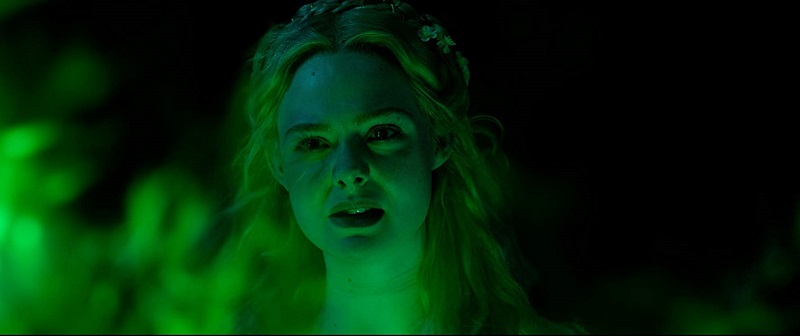
The new helmer also has a firm command on these characters and one could argue audiences even get a deeper sense of who Maleficent is and why she does what she does with the introduction of others like her. If you had told anyone watching the animated classic in 1959 that there were more hauntingly horned and wickedly winged folks like the legendary villain, that would have only heightened the fear garnered by the character voiced by Eleanor Audley.
Taken as a two-hour whole, there are elements that could have been cut. Now, the film doesn’t feel long. It is more that there are a handful of what I like to call mind wandering opportunities that speak to that script not completely grabbing us from the get-go and never letting go. Sadly, it happens … but once those credits roll, prepare to be impressed by the seemingly rare sequel that matches the original and dare I say, even improves on it a bit.
Grade: B

